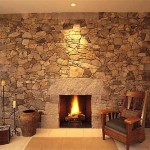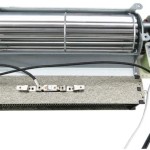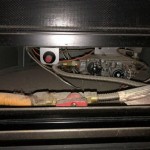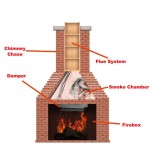Understanding Fireplace Inserts and Wood Stoves: Efficiency and Functionality
Fireplace inserts and wood stoves represent established heating solutions, offering both supplemental and primary heating options for residences. Distinguishing between the two involves recognizing their construction, installation procedures, and overall performance characteristics. This article examines the key features of fireplace inserts and wood stoves, providing insights into their operation, maintenance, and suitability for various heating requirements.
Both fireplace inserts and wood stoves function by burning wood to generate heat. However, the method of installation and the design significantly impact their heating efficiency and overall aesthetic appeal. Furthermore, regulatory requirements regarding emissions influence the selection and operation of these heating appliances.
Defining Fireplace Inserts
A fireplace insert is essentially a self-contained heating appliance designed to be installed within an existing masonry fireplace. The primary purpose of an insert is to increase the efficiency of the fireplace, which traditionally loses a significant amount of heat up the chimney. Inserts are typically constructed of cast iron or steel and feature a sealed firebox, a combustion chamber designed to maximize heat output and minimize emissions.
Installation of a fireplace insert involves sliding the unit into the fireplace opening and connecting it to a dedicated chimney liner. This liner, typically made of stainless steel, extends from the insert's flue collar to the top of the chimney, ensuring proper venting of combustion byproducts. The seal between the insert and the chimney is crucial for reducing heat loss and preventing dangerous backdrafts of smoke and carbon monoxide into the living space.
Fireplace inserts are available in various sizes and styles to suit different fireplace openings and aesthetic preferences. Some models feature decorative fronts and glass doors, allowing homeowners to enjoy the visual appeal of a fire while benefiting from increased heating efficiency. Operational features, such as blowers and thermostats, further enhance the performance and convenience of fireplace inserts.
Exploring Wood Stoves
Wood stoves are freestanding heating appliances designed to be placed directly in a room. Unlike fireplace inserts, wood stoves do not require an existing fireplace for installation. They are typically constructed of cast iron, steel, or a combination of both, and share the sealed firebox design principle with fireplace inserts. This airtight construction allows for precise control over the combustion process, leading to increased efficiency and reduced emissions.
Installation of a wood stove involves adhering to specific clearance requirements from combustible materials, such as walls and furniture. This ensures safety and prevents fire hazards. A stovepipe, typically made of heavy-gauge steel, connects the stove's flue outlet to a chimney or designated venting system. Similar to fireplace inserts, a proper chimney liner is essential for safe and efficient venting.
Wood stoves are available in a wide range of sizes, styles, and finishes, offering homeowners considerable flexibility in selecting an appliance that complements their decor. Some models feature catalytic combustors or secondary combustion systems, which further reduce emissions and increase heat output. Additional features, such as ash drawers and air wash systems (which keep the glass door clean), enhance the ease of use and maintenance of wood stoves.
Comparing Efficiency and Emissions
Both fireplace inserts and wood stoves are designed to be more efficient than traditional open fireplaces. Open fireplaces typically have an efficiency rating of 10% or less, meaning that the majority of the heat produced is lost up the chimney. Fireplace inserts and wood stoves, on the other hand, can achieve efficiency ratings of 70% or higher. This improved efficiency translates to lower fuel consumption and reduced heating costs.
The Environmental Protection Agency (EPA) regulates the emissions from wood-burning appliances. To meet EPA standards, modern fireplace inserts and wood stoves incorporate advanced combustion technologies that minimize the release of particulate matter and other pollutants. Catalytic combustors and secondary combustion systems are common features that help to achieve these lower emissions levels. When selecting a fireplace insert or wood stove, it is crucial to choose a model that is EPA-certified to ensure compliance with environmental regulations.
The efficiency and emissions performance of a fireplace insert or wood stove is also influenced by the type and quality of wood burned. Seasoned hardwood, which has a moisture content of 20% or less, burns more efficiently and produces less smoke than green or unseasoned wood. Proper wood storage and preparation are essential for maximizing the performance of wood-burning appliances and minimizing air pollution.
Factors Influencing Selection
The choice between a fireplace insert and a wood stove depends on several factors, including the existing fireplace situation, the desired heating capacity, and aesthetic preferences. If a homeowner already has a masonry fireplace, a fireplace insert may be the more convenient and cost-effective option. However, if a fireplace does not exist or if the homeowner desires a more freestanding heating solution, a wood stove would be the appropriate choice.
The heating capacity of a fireplace insert or wood stove is measured in British thermal units (BTUs). The appropriate BTU rating depends on the size of the area to be heated, the insulation levels of the home, and the climate. Over-sizing a heating appliance can lead to overheating and inefficient operation, while under-sizing can result in inadequate heating. Consulting with a qualified heating professional can help determine the appropriate BTU rating for a specific heating application.
Aesthetic considerations also play a significant role in the selection process. Fireplace inserts and wood stoves are available in a wide range of styles and finishes, from traditional cast iron designs to more modern and contemporary options. Homeowners should choose an appliance that complements their existing décor and personal preferences. The visibility of the fire, the presence of decorative accents, and the overall design of the appliance are all important factors to consider.
Operation and Maintenance Considerations
Proper operation and maintenance are essential for ensuring the safe and efficient performance of fireplace inserts and wood stoves. Regular cleaning of the chimney is crucial for preventing creosote buildup, which can lead to chimney fires. Creosote is a flammable substance that forms when wood smoke condenses in the chimney. A qualified chimney sweep should inspect and clean the chimney at least once a year.
The firebox of the fireplace insert or wood stove should also be cleaned regularly to remove ash buildup. Ash can reduce the efficiency of the appliance and impede airflow. Most models feature an ash drawer that simplifies the cleaning process. When removing ash, it is important to allow it to cool completely before placing it in a metal container with a tight-fitting lid. The container should be placed away from combustible materials until the ash can be disposed of properly.
Inspecting the door gasket and other seals of the fireplace insert or wood stove is also important for maintaining its efficiency. A damaged or worn gasket can allow air to leak into the firebox, reducing the efficiency of the appliance and potentially leading to uncontrolled burning. Replacing the gasket as needed will ensure a tight seal and optimal performance. Furthermore, regularly inspecting the chimney liner for any signs of damage or corrosion is crucial for safe operation.
Safe operation also includes proper wood handling and storage. Seasoned wood should be stored in a dry, well-ventilated area away from the house. Avoid storing wood directly on the ground, as this can promote moisture absorption and decay. When loading the firebox, avoid overfilling it, as this can lead to incomplete combustion and increased emissions. Always follow the manufacturer's instructions for operating the fireplace insert or wood stove safely and efficiently. Using a carbon monoxide detector in the home is highly recommended to provide an additional layer of safety.

Lopi Premium Wood Fireplace Inserts Custom Hearth Fireplaces And Stoves

Ventis Hei240 Wood Burning Insert Rockford Chimney

Wood Burning Fireplace Inserts Insert Installation

Why A Wood Burning Fireplace Insert Bethesda Md Service

T25i Timberwolf Wood Fireplace Insert Hearth Stove Patio

Napoleon Epi3 Wood Fireplace Insert Inserts By Rockford Chimney

Why A Wood Burning Fireplace Insert Bethesda Md Service

Wood Inserts We Love Fire

Should I Use A Fireplace Insert Or Wood Stove To Heat Up My Home

What S Best A Fireplace Stove Or Insert We Love Fire
Related Posts








